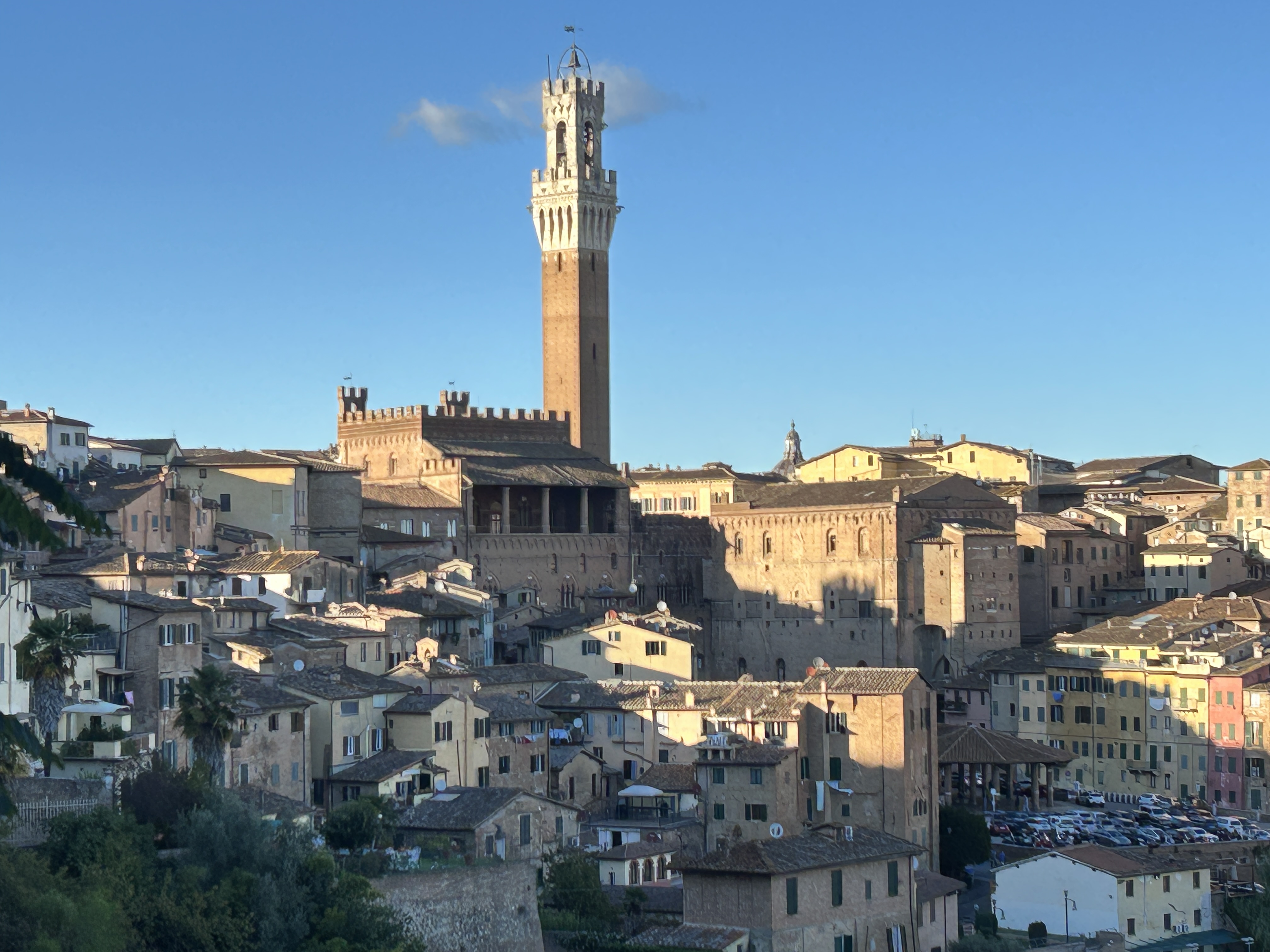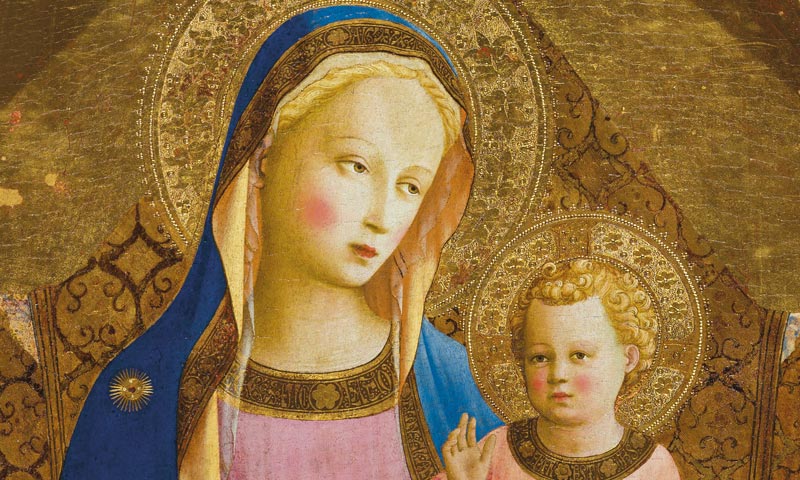The only time Val and I visited the
southern Italian region of Puglia was 17 years ago. It was in connection with
research for a book about Italy’s lesser-known regions that Val was creating
with the Italian cook and food journalist, Anna del Conte. It provided great
copy for Anna and the most evocative subject matter for Val’s illustrations and
paintings.
At the invitation of people we met back
then, a Pugliese almond and olive farmer and her husband, we returned in
September 2023 with friends. We based ourselves at the couple’s masseria
south of the region’s Adriatic port town, Bari.
Matera was a short drive further south across
the border in Basilicata, the adjoining region to Puglia. Our Italian
neighbours in Tuscany said we had to visit it after they had been to a family
wedding there. They said it was unique. I subsequently read about its 1,500 abandoned
cave dwellings that honeycomb the flanks of a steep ravine.
Matera seems to have existed forever. Archeological
evidence suggests that it has been inhabited for over 10,000 years making it
the third oldest city in the world, after Aleppo and Jericho.
Originally a collection of caves in the
Paleolithic Age, over time people added to the fronts of the caves, creating
‘spontaneous architecture’, where there is no plan or blueprint, but rather
people build where they can and one person’s ceiling becomes a neighbour’s
floor and graveyards get built on church rooftops. Known as the Sassi, or
‘rocks’, these cliff dwellings were where the very poorest in society lived. Most
of the caves consisted of one room while others had the addition of another for
the animals where the occupants had burrowed deeper into the rock. That’s it. A
single entrance door to get in, occasionally a small grill to let in a little
light but no windows.

Life was hard. It can be faddish to
romanticise the poor, as having a shared experience, a reliance on simple
pleasures. Economic hardships can come to seem quaint to a tourist from the
privilege of his or her hotel room considering life in the Sassi. But there’s
an inherent danger, as romanticisation prevents empathy. Life here,
particularly in the first half of the last century, was hideous in the Sassi, possibly
lightened with a bit of comfort from it being awful for everyone.

Matera’s obscurity ended in 1945 when the
Italian artist and author Carlo Levi published his memoir Christ Stopped at
Eboli, about his year of political exile in Basilicata under the Fascists.
Levi painted a vivid portrait of a forgotten rural world that had, since the Unification
of Italy in 1870, sunk into a desperate poverty. The book’s title, referring to
the town of Eboli near Naples, suggested that Christianity and civilisation had
never reached the deep south, leaving it a pagan, lawless land, riddled with
ancient superstitions, where some shepherds were still believed to commune with
wolves. Levi singled out the Sassi for its ‘tragic beauty’ and hallucinogenic
aura of decay. The town’s prehistoric cave dwellings had by then become dark
holes riddled with filth and disease, where animals lived in the same space
with humans, and infant mortality rates were horrendous, thanks to rampant
malaria, trachoma and dysentery.
Levi’s book caused an uproar in postwar
Italy, and the Sassi became notorious as la vergogna nazionale, the
disgrace of the nation.
After a visit in 1950, Italian Prime
Minister Alcide De Gasperi was so appalled that he set in motion a draconian
plan to relocate the Sassi’s entire population to new housing developments.
Italy was flush with funds from the Marshall Plan, and American experts such as
Friedrich Friedmann, a philosophy professor at the University of Arkansas,
arrived with Italian academics who had studied the mass rural relocation
programmes of the Tennessee Valley Authority in the 1930s. The new public
houses were designed by Italy’s most avant-garde architects, in a misguided
utopian vision that would actually isolate families in dismal, claustrophobic
boxes.
All 16,000 residents of the Sassi were
rounded up and sent to live in these new housing projects on the land above it leaving
behind an empty shell. Soon the Sassi
became a ghost town. Some Materan officials suggested that the whole district
be walled up and forgotten. Instead, the ancient lanes and paths became
overgrown and decrepit, and the Sassi soon gained a reputation for crime,
attracting drug dealers, thieves and smugglers. At the same time, its former
inhabitants had difficulty adjusting to their new lodgings.
Given a choice, it’s unlikely many would
have opted to remain in the Sassi, but nonetheless, they struggled with new
lives in separate boxes, without the support of their community that had got
them through their previous struggles. They felt the loss of their life lived
outdoors - neighbouring families sharing a courtyard to prepare meals together,
to support each other. To add to the culture shock, a stigma clung to people
from the Sassi. Relocated families pretended they were from other parts of
Italy. Many never discussed their previous lives with younger generations, and
never went back to the Sassi, even if they lived just a few kilometers away.

Obviously, the dwellings in the Sassi were
unhealthy and conditions were terrible. But why, I wonder, did the post WWII
Italian government focus on the failures over the years since Unification and
especially those since the start of the 20th century and forget that the Sassi
had thrived for the previous 10,000? The only real problem of the Sassi was
economic: it was poverty that made the Sassi unhealthy.
I thought that it must have looked like a
gigantic piece of Swiss cheese after it was abandoned and before tourism made
it a ‘must see’ attraction. I understand that what you see on the surface is
only 30 percent of the Sassi, the other 70 percent being hidden in the
hillside. Having been there it is easy to see why the town was chosen to double
for ancient Jerusalem in films, including Pier Paolo Pasolini’s The Gospel
According to St. Matthew from 1964 and Mel Gibson’s 2004 The Passion of
the Christ.
After a number of years, people drifted
back, mostly for nefarious purposes, to hide away their illicit activities.
Eventually, though, other people began settling in the Sassi, people who began
to think of it in a new way.
The ancient warren of natural caves in
Matera may be Europe’s most dramatic story of rebirth. Today, its underground
residences are being reinhabited by a few Italians, if not to live there, then
to serve the shopping and eating desires of tourists and to offer one of
Europe’s most exotic new experiences: staying in one of Sassi’s cave hotels.
The biggest challenge it seems is to ensure that the Sassi develops as a living
community rather than a tourist enclave. Many local people don’t want it to be
a museum, just a place where culture is consumed. Access to schools, hospitals,
stores and supermarkets remain difficult and there are bitter disputes over
whether car traffic should be allowed on the Sassi’s only road.
There is no doubt that Matera’s paleolithic
past has made it a thriving tourist destination. Amazingly in my opinion, it
was chosen as the European Capital of Culture in 2019.
Since the opening sequences of the last
James Bond film was shot there that same year (No Time To Die), I got
the impression that Matera is struggling with over-tourism and deciding what
they want the Sassi to mean, what it should be in the future.
For better or worse, it never had a heyday,
so there’s no era to preserve. Its claim to fame is the caves, and the story of
those caves is one of the dualities between human suffering and human strength.
Our first glance of the Sassi was from the edge
of the modern part of Matera which sprawls along a flat area above it called
the Piano.
Below us was a maze of rock caves and
walkways sapped of colour by centuries of sun, rising and falling without rhyme
or reason. On the opposite side of the ravine, on a plateau called the Murgia,
more mysterious caves stared back at us like vacant eyes.

In southern Italy, the past has often
helped rescue the present. Ever since the excavation of Pompeii brought grand
tours to Naples in the 18th century, historical sites have lured foreign
travelers to impoverished outposts. But Matera may be Europe’s most radical
rags-to-riches story.
Located in the instep of the
Italian boot, the town has always been an isolated, forgotten part of
Basilicata, among the least populated, least visited and least understood
regions of Italy. Even in the 19th century, few travelers ventured through its
arid, desolate landscapes, which were known to be full of
briganti, or
brigands. The rare adventurers who did stumble upon Matera were mystified by
the upside-down world of the Sassi where thousands of people lived one above
the other.
As we walked up and down the many unmarked
and often precarious paths of the Sassi glimpses into partially boarded-up
caves acted as a constant reminder of how deprived the people who lived here
must have been. I felt like a voyeur in a place of poverty.
After a not
unpleasant lunch in a windowless trattoria inside a large rock cave I had to
get out of the Sassi, never to return, thinking how can a place be so stirring yet
so vacant and depressing at the same time?
The experience seemed to strike each of us
in different ways. I bit back my irritation. Eventually I settled upon the fact
that an enormously heady place like Matera was going to settle into everyone’s
consciousness differently, and it wasn’t my job to direct other people’s
experience.
My lasting impression is that it would be like
having one foot in a graveyard to live in a town on the edge of such an
emotional precipice as the Sassi.
Roger Jupe, 11 September 2023













